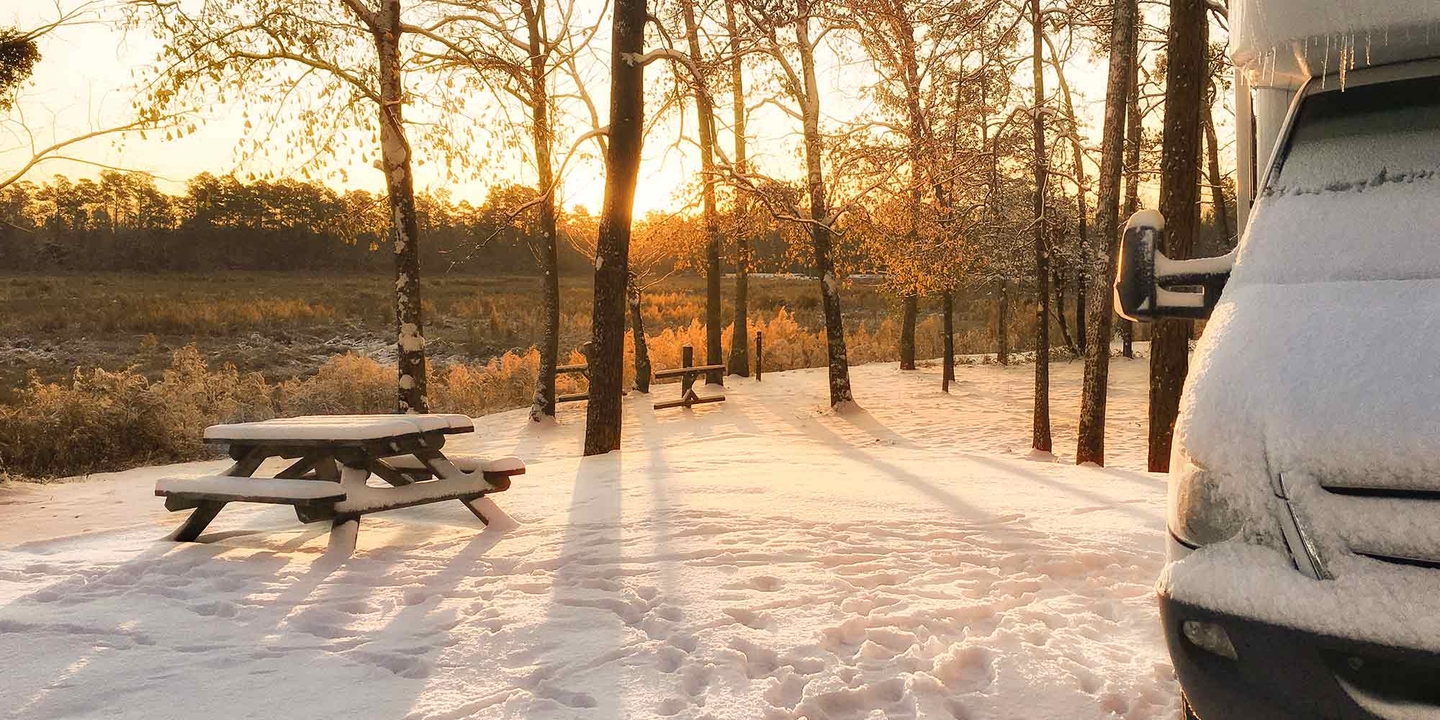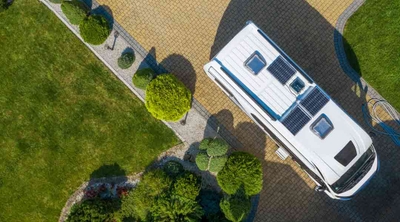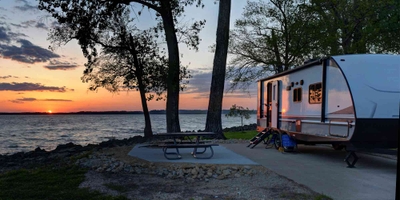How to winterize an RV
5 min read
Before you get ready to tuck your RV away for the season, you'll want to winterize your motorhome to protect it from freezing winter temperatures. Opening your RV in the spring to discover damage caused by frozen water can cost you hundreds, if not thousands, of dollars. Follow this RV winterizing checklist to help your rig function at its best when it's time for the fun to begin in the spring.
What month should I winterize my RV?
While there is not a specific month recommendation to winterize your RV, National Vehicle states that RV lines begin to freeze when temperatures fall below 30 F for more than 30 minutes. You can watch your local weather forecast and consult this rule to decide when to winterize your motorhome and stay on the safe side.
Steps to winterize an RV
Follow these steps to winterize a travel trailer or motorhome to help keep water from seriously damaging your rig. Use our RV winterizing checklist to help winterize your motorhome.
1. Remove hookups and drain your RV's water system
If you've connected your RV to water at home or a campground, unplug it and turn your water heater off. Open all the faucets, including the shower, and flush the toilet to ensure all water is out of the system. Next, drain all your RV's low-point drains, which should be easily visible (and easily reachable) underneath your rig. Look for stickers that say "low-point drain" right above them. Consult your owner's manual if you need help finding them.
Now drain the water heater. Its placement varies depending on the model, so poke around under your couches or consult your owner’s manual to find its exact location.
2. Blow out your water lines
Head outside and blow out your water lines using an air compressor and blow-out plug that allows you to connect the compressor directly to your water intake. Head back inside and bypass your water heater. You'll need a bypass valve kit to block the flow of water into the water heater, saving the cost of filling the water heater with antifreeze, and preventing damage to the tank from freezing. These are affordable and available online or at your local camping or hardware store.
3. Add antifreeze from outside intakes and to drains
Add antifreeze by the gallon from the outside water intake using a hand pump. Go inside and check each faucet separately to ensure it's filling the system. Start high and work low. Check the kitchen sink first, then the bathroom sink, shower, and toilet. If you have extra accessories that use water, now is the time to ensure the water is emptied from them, too. That includes outside showers, ice makers, washing machines, and macerating systems.
Pour antifreeze into your sink and shower drains. Antifreeze contains chemicals that lower the freezing point of water. It protects pipes by preventing residual water in the plumbing from freezing and expanding which can cause cracks or bursts and leaks.
4. Disconnect the batteries
Remove the batteries from the RV, or ensure that they're fully charged and connected to a maintenance charger over the winter. Cold weather depletes batteries quickly. Maintenance chargers keep the batteries full without overcharging them.
5. Seal openings
Check all seals and caulking around windows, doors, and vents to ensure they're intact. Apply sealant where necessary to prevent water from getting inside, which can damage the RV when it freezes and expands.
6. Cover the RV
If you can, store your RV under a roof to protect it from snow, ice, and falling debris. If you don't have a covered area, consider using a breathable RV cover to protect the exterior from the elements.
Additional ways to winterize a motorhome
Now that you’ve prepared your RV for storage, it’s time to say goodbye until next season. Take a few additional steps to winterize your RV, including:
- Vacuum storage bins to remove crumbs and to keep mice out of your RV
- Clean out sewer hoses and store them for the winter
- Use wheel chocks and make sure your rig is stabilized
- Keep your RV out of direct sunlight and consider buying a protective cover
- Clean the awning using a cleaner specifically designed for the fabric
What happens if you don't winterize your RV?
Not winterizing your RV can lead to several issues, especially if the vehicle is exposed to freezing temperatures for an extended period. Big problems such as pipes freezing, damage to appliances, battery drainage and interior damage may occur if RV winterization is not completed properly.
To avoid these issues, it's important to winterize your RV before the onset of cold weather. Winterizing can save you from costly repairs and ensure your RV is ready to go when warmer weather returns. To learn more about winterizing other vehicles, find out how to winterize your boat.





